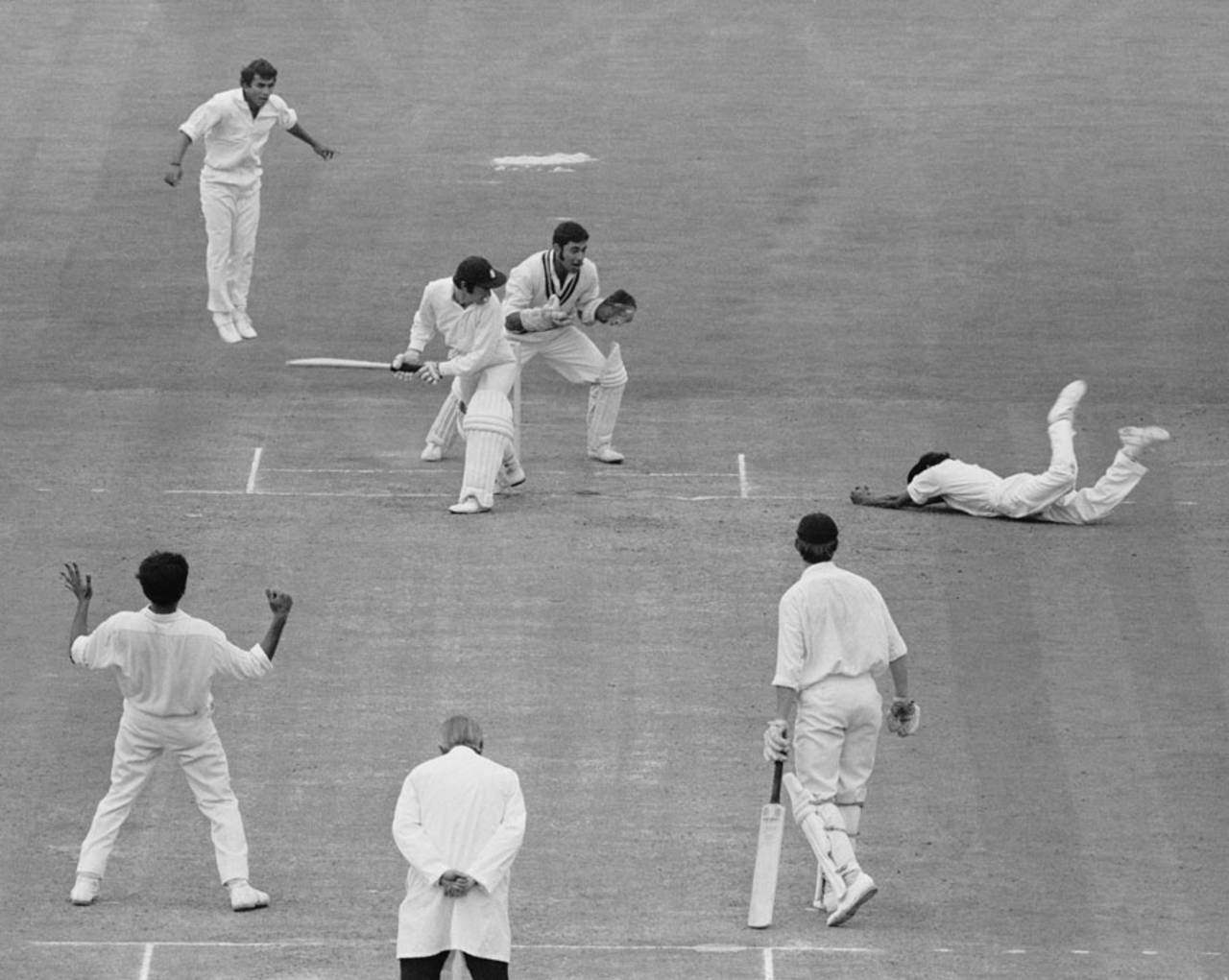To have emerged from the London Underground at Oval station and come face to face with a sign that said "Surrey County Cricket Ground" was to be reminded of the days of Peter May and Jim Laker, when Surrey were invincible in the County Championship.
My earliest visual memories of The Oval include a superb black-and-white photograph, under its giant scoreboard, that the 1947 edition of Wisden carried - of Chandu Sarwate and Shute Banerjee, who added 249 for the last wicket for India
versus Surrey.
My tickets for the
recent Ashes Test at The Oval were courtesy my London-based friends Krishna and Ravi. We had great seats behind the bowler's arm at the Vauxhall End. Ravi's friend Balwant was assigned the task of taking care of me at the ground, and he was a generous host.
The Oval laid out a more than warm welcome for us. We were greeted by blistering heat on the first morning, when Michael Clarke won the toss, an advantage that the cavalier David Warner was to fritter away with characteristically irresponsible batting.
The weather was not the only factor contributing to memories of Test matches in India and my sense of déjà vu. Equally responsible was the early introduction of
Graeme Swann, whose unchanged spell was reminiscent of Bedi and Prasanna in their pomp.
Balwant is no idle spectator. He loves to analyse and dissect aspects of play. His probing questions encouraged me to offer my own opinions, including on Swann's bowling. I would have been foolish not to agree that we were watching a master craftsman, but I was disappointed that Swann seemed to fire them in faster than usual. Was it a response to some trait of the pitch not obvious to the onlooker a hundred yards away?
I shared my thoughts with Balwant, and went on to rue the modern tendency of bowlers going round the wicket at the first sight of a left-hand batsman. Doing so, Swann managed to look innocuous despite the ultra-cautious approach of Chris Rogers. "In my generation, offspinners preferred to attack the left-hander in his blind spot on leg and middle from over the wicket," I said.
Former Hyderabad captain
ML Jaisimha, and his friend and India captain Tiger Pataudi had been ardent votaries of dense close-in cordons made fearsome by silly point and forward short leg. V Subramanya, the Karnataka captain, was an acknowledged pioneer of this field - at least in the south zone.
"He heard you," Balwant exclaimed, when Swann changed to over the wicket. "But he should have a forward short leg," I said, warming up to my new-found status as resident expert. This time it was Alastair Cook who seemed to have heard me: he moved a fielder into the bat-pad position, and soon Rogers succumbed to the combined assault of slip, gully and short leg breathing down his neck.
The conversation soon turned to Chandrasekhar and the Oval Test
of 1971. "
Eknath Solkar fielded daringly close to the batsmen," Balwant remembered, but I disagreed. Solkar stood at least a couple of feet deeper than modern, helmeted short legs. He was perfectly still and stayed down till the ball left the bat, never taking his eyes off it, never turning his back. Some of his spectacular efforts in that Oval Test were catches he held incredibly close to the bat - diving forward.
With our vociferous support for Shane Watson and Steve Smith (no more than a "cloob cricketer" according to Geoff Boycott), my son Abhinav and I would have certainly failed the Tebbit test. "Always support the underdog," I explained sheepishly to our bemused neighbours Bernard and Vinod, an unlikely pair of Sunday cricketers some 30 years apart in age but bound by their loyalty to England.
Abhinav strongly disapproved of the over-defensive tactics England adopted when James Faulkner started wielding the long handle. "It can prove counterproductive," I proclaimed, by now sounding almost oracular. I said it reminded me of how Ashok Mankad, the former Bombay captain, made a blistering (and match-winning) 136 in 1976
against Hyderabad, when, content with a first-innings lead, his rival number Jaisimha placed every fielder on the boundary in the second innings, instead of bowling normal stuff.
The Oval Test might have been a dead rubber but we found the match exciting nonetheless. It was after all our first Test match experience in England - Barmy Army, English beer and wine, Henry Blofeld in the commentary box and all. As we were leaving the ground, my mobile phone rang. It was Ravi, from the members stand. "When was the last time you saw a full house for a Test match in India?" he asked. It was a good question.
